Pearltrees: Social Media that Doesn’t Waste Time
I tend to be a luddite when it comes to social media. Usually, what I gain from browsing social media doesn’t feel worth the time spent. I mean, how many silly dog/cat/baby videos can you watch?
Meanwhile, Facebook, Google+, et al are tracking our every move and selling data about our likes and dislikes. Did you “like” a post about something? Be prepared to be peppered with advertisements related to it whenever you’re online. (Phooey! I spit on their targeted advertising!) Pearltrees is a welcome exception.
Online Bookmarking
Pearltrees is a free online bookmarking system that also uses social media technology. At its core, it lets you bookmark websites and organize them into folders called collections. You can search within your bookmarks, add notes and comments on websites, and easily share your bookmarks with others. Plugins available for the major browsers (Chrome, Firefox, Safari, etc.) create a button to easily add a website you’re viewing to your collection.
Pearltrees offers apps for iPhone, iPad, and Android devices too. So you can access your bookmarks from most anywhere. After about two years of using Pearltrees, I have about 900 bookmarks organized into 80 folders/collections.
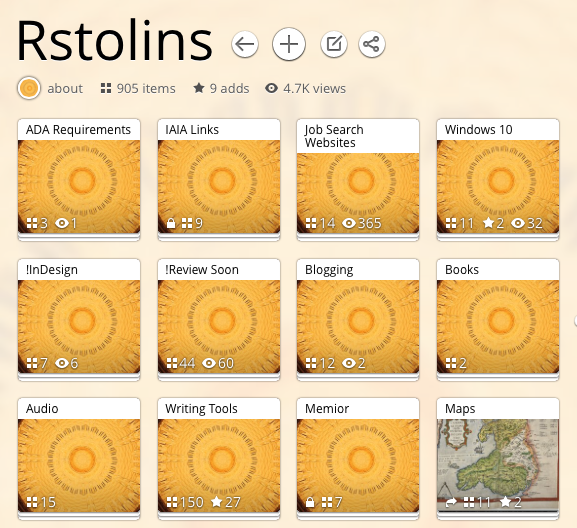
The start of my Pearltrees collection
Premium Features
At the start of 2014, I decided to try a premium membership. Cost is about $30 a year. With this, I can do things like:
- Remove distracting ads
- Archive web pages I can still access if they disappear,
- Customize my bookmark pages
- Use Pearltrees offline
- Create private collections
Pearltrees recently added education-oriented accounts with special pricing and some additional capabilities. These offer features similar to a premium account at a lower cost.
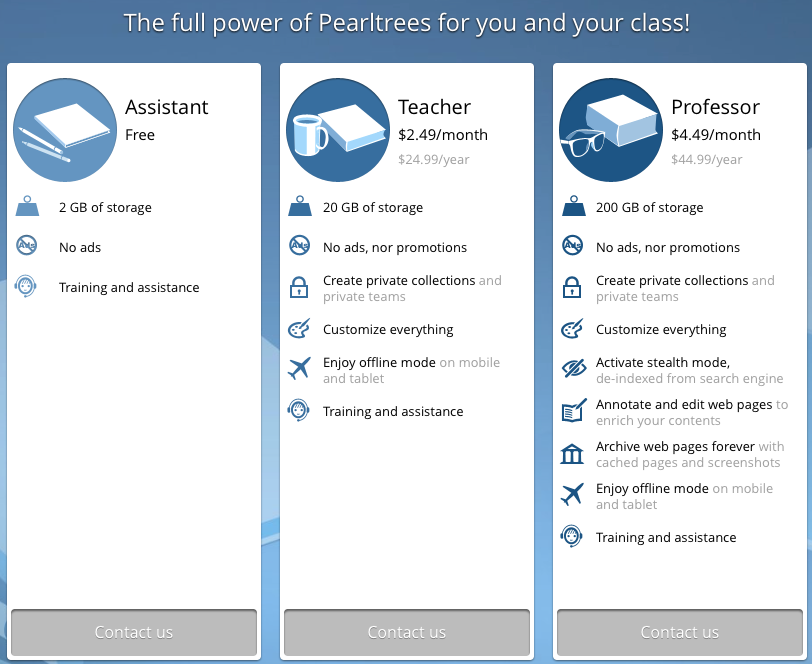
Social Media Features
So where does social media come in with Pearltrees? There are three primary features, each of them useful in their own way.
- Notifications when others bookmark identical pages
- Networking with other Pearlrees users
- Notifications of collections similar to your own
- Searches within the Pearltrees community
Bookmark Notifications
You can set Pearltrees to notify you when another user bookmarks the same page. Then you can go take a look at the other user’s collections. This has proven to be a very useful feature. Someone who bookmarks the same page you have likely has similar interests. So the collection they put the bookmark into usually has other bookmarks that are worth taking a look at. I’ve often made very useful discoveries just browsing the bookmarks of other users found this way.
It’s like a human-filtered Google search. Google itself uses calculated formulas to display search results. In Pearltrees, everything you see was previously bookmarked by a human. That is, it’s driven by human interest rather than a computer-based formula and advertising dollars.
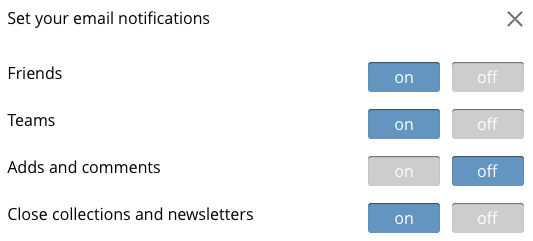
Networking
You can “friend” another Pearltrees user. This is like bookmarking an individual, making it easy to revisit their collections. Over time, you discover other users with similar interests. You can also “team” with other Pearltrees users to collaborate on team collections. And you can subscribe to the collections of others. This effectively adds dynamic collections to your own collection. You’ll see new items they add to their collection after you’ve added it to yours.
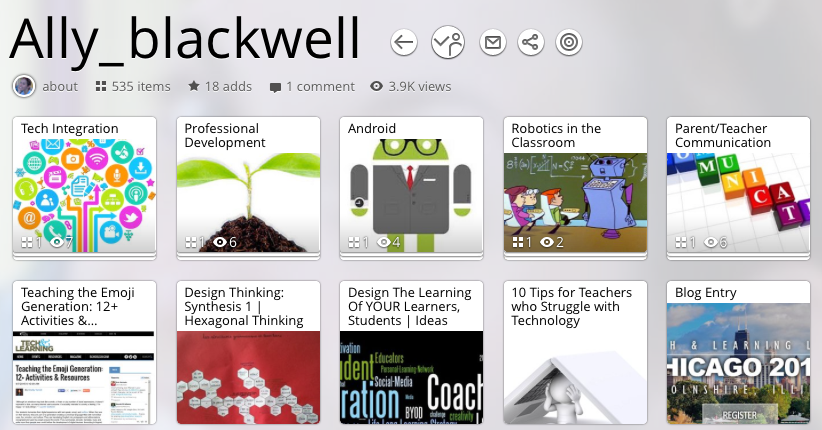
It’s easy to view the collections of other Pearltrees users
Similar Collections
Pearltrees scans the collections of other users and displays any that seem closely related to your own interests. Pearltrees gauges your interests from your recent bookmarking activity. Browsing these collections can be a very effiicent way to discover new webpages and apps. As with searching the collections of other Pearltrees users who added the same page, this form of browsing uses a human fllter rather than a Google search algorithm.
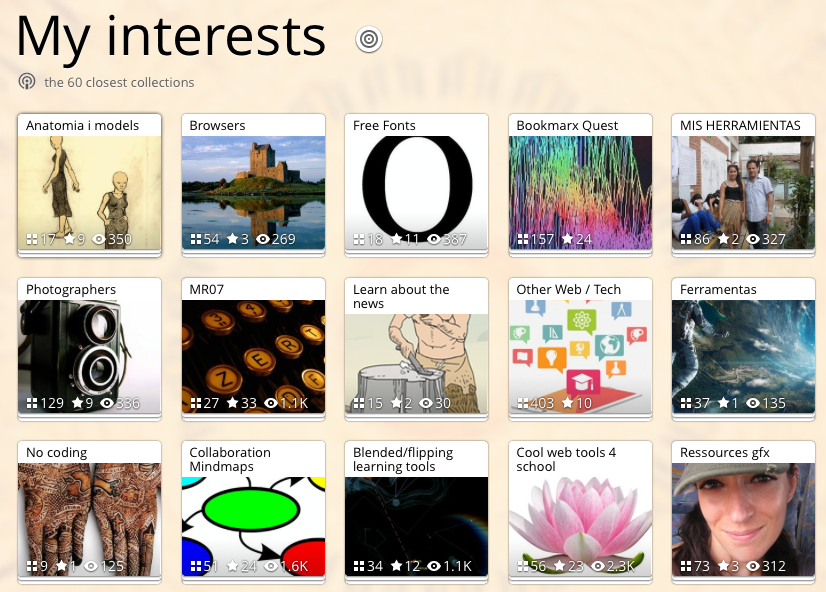
Pearltrees displays other user collections related to your bookmarks
For example, one day I was browsing the collection of another Pearltrees user and discovered a periodic table of visuallization methods. Now I wouldn’t have ever thought to even look for such a thing. It’s the sort of serendipitous discovery that Pearltrees facilitates.
Searching within Pearltrees
You can perform keyword searches within the Pearltrees community just as you might with Google. Unlike a Google search, the results aren’t affected by advertising dollars. They are exclusively from pages that other humans already found useful enough to bookmark. Since most Pearltrees bookmarks are grouped into collections, one way to broaden your search is to look around in collections where these bookmarks appear.
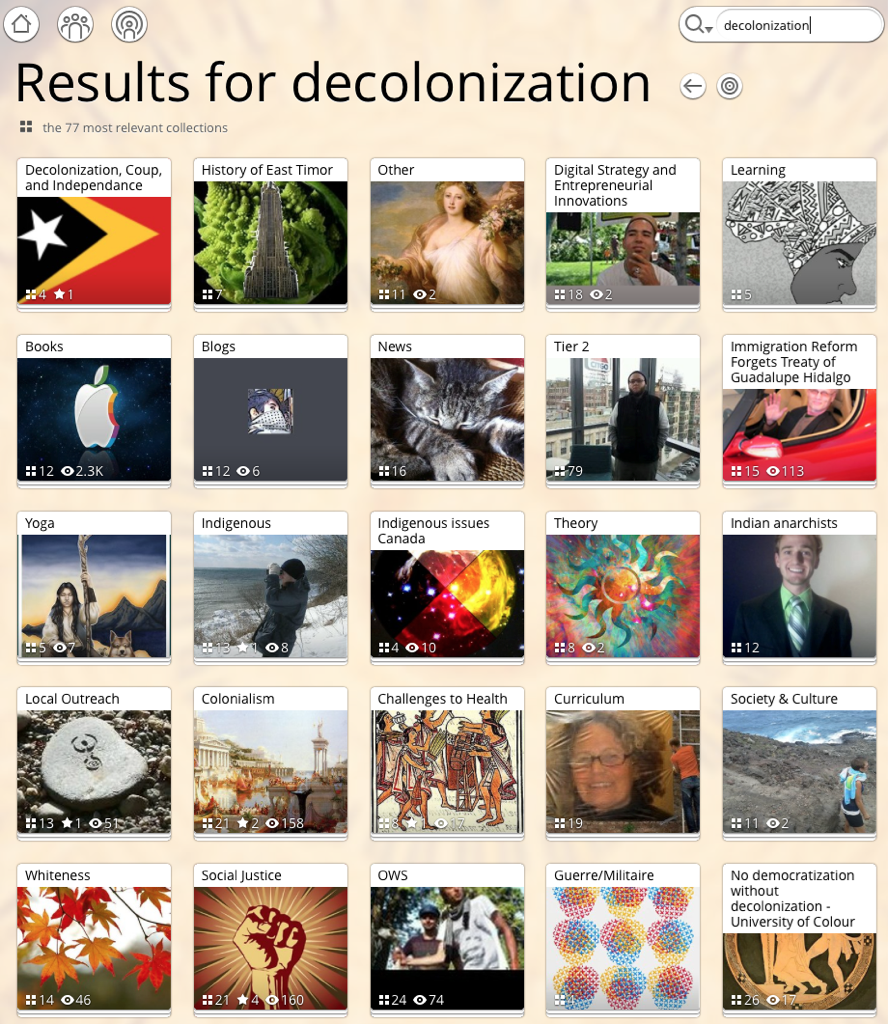
Pearltrees as a Research Aid
Pearltrees is a great way to track online research for term papers and essays. Your bookmarks are portable, so they are available at the library, computer lab, etc. And since you can organize them into collections, the bookmarks are much more accessible than the ones you’d create with Chrome or Firefox. They’re also much more visual and easy to browse.
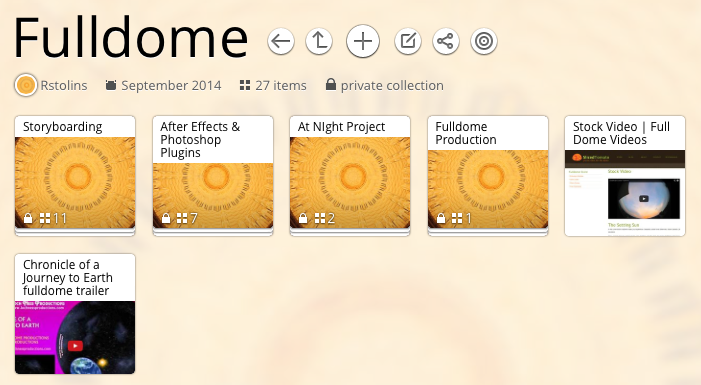
Pearltrees as a Collaboration Aid
Pearltrees allows you to share your bookmark collections with others. Anyone you share a collection link with can view it as if they were logged into your Pearltrees account. (They won’t be able to see your other collections unless you send them additional links.) So if you were researching a topic with a classmate, you could send her or him a link to your bookmark collection about that topic. If the classmate also has a Pearltrees account, you could share comments about each bookmark.
Conclusion
Pearltrees is a welcome exception to the wasted time experience I have with most other social media. OK, I admit it. I log onto Facebook once or twice a year whether I need to or not. And I’ve found some long-lost friends via Facebook. But Pearltrees gives me a consistently productive return on time I spend there. When I’m waiting on an appointment somewhere, I’ll often open the Pearltrees app on my phone or iPad and browse around. I almost always find something interesting and useful to bookmark myself.
About this Column
This column will address various ideas, issues and applications of technology. Readers are welcome to comment and suggest new topics.
About the Writer
Russel Stolins (rstolins@iaia.edu) is teaching staff (staffulty) at IAIA. He runs IAIA’s ePortfolio program and teaches a business communications course. Despite his reputation, Russel is a people-person, not an actual techie. When he’s not teaching, Russel enjoys caring for foster children, photography, and writing.

